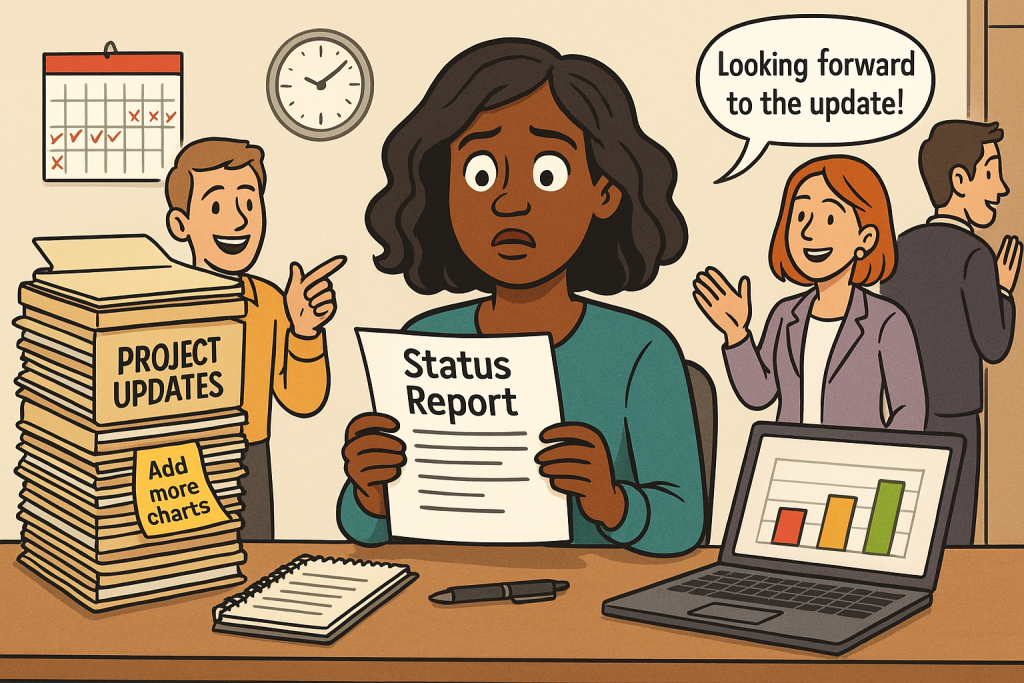
The Art of the Status Report: Making Updates Sound Way More Interesting Than They Are
Congratulations — you’ve made it this far in your accidental PM journey. You’re juggling deadlines, corralling stakeholders, running meetings that only sometimes go off the rails, and learning the sacred art of saying “let’s circle back.”
Now comes one of your biggest responsibilities: The Status Report.
On the surface, it sounds simple. Just “update people on progress.”
In reality, it’s an ancient ritual where you must transform chaos, complaints, and coffee-fueled progress into something that makes executives smile, not panic.
Let’s break it down.
1. Know Your Audience
Executives don’t want a novel. They want three things:
- Are we on track?
- What’s at risk?
- Do I need to panic?
Meanwhile, your team actually wants the details: bugs, blockers, and who still owes what.
Translation: One size does not fit all. Tweak your message depending on who’s reading.
2. Use Colors Wisely
The classic Red / Yellow / Green. Simple, right? Wrong.
- Green: Everything’s fine (translation: nothing’s on fire yet).
- Yellow: Trouble is brewing (translation: “we’re working on it, please don’t ask too many questions”).
- Red: Send snacks and prayers.
Tip: Never use Red casually. Executives see it and suddenly everyone is on high alert.
3. Keep It Short, Keep It Sharp
No one wants to read a five-page essay on “why testing ran late.”
Stick to:
- What’s done (the wins!)
- What’s in progress (the grind!)
- What’s at risk (the drama!)
- What’s next (the hope!).
Think of it like movie trailers — quick, engaging, and no one needs the director’s cut.
4. Show Progress Visually
Charts, dashboards, and even a progress bar can make your update feel real.
People love visuals because they don’t have to read paragraphs. (And let’s be honest, neither do you.)
5. Honesty Is Your Friend (Mostly)
You might feel pressure to sugarcoat, but a good status report tells the truth. If something is behind, say so — then immediately add what’s being done about it.
It’s like delivering bad news with an appetizer: softer, easier to digest.
Closing Thought
The status report is your stage. Play it right, and you look like the calm, collected leader holding it all together. Play it wrong, and you’re the reason for another “urgent meeting.”
This was Chapter Five of The Bible of the Volunteer-Told Project Manager.
Stay tuned for Chapter Six: “Risk Management: Fortune-Telling with a Side of Paranoia.”
